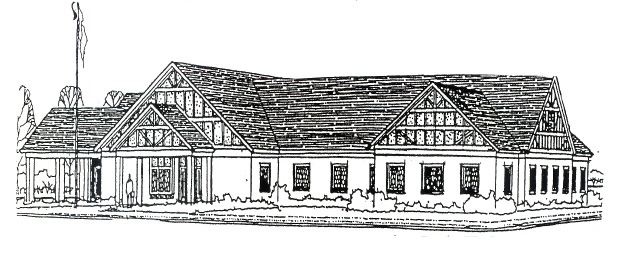
|
Online Banking
Self-Service
Tools & Learning
|
Our MissionOur Mission is to remain an independent community financial institution by enhancing the shareholders value, actively supporting the citizens of our community with quality products and services, and providing a meaningful work environment for our employees. Our HistoryGilmore & Co., Bankers - 1873The history of Blissfield State Bank begins with the forming of a private bank, the first in Blissfield, on May 5, 1873. This private bank was formed by Arthur D. Gilmore, a recent graduate (1870) of the University of Michigan law school, and David Carpenter, the largest taxpayer in Blissfield Township at that time. The bank was located on the west side of the River Raisin, in a brick building owned by David Carpenter located next to the bridge and known as Gilmore & Co., Bankers - a bold venture during a time of financial panic throughout the country. Gilmore & Co. emphasized farm lending from the beginning, particularly real estate mortgages and secured loans. Agricultural loans were an important part of the lending in 1873 and continue to be an important segment of Blissfield State Bank’s loan portfolio. Blissfield State Bank - 1893On April 5, 1893, a group of men formed a corporation for the purpose of purchasing the private bank known as Gilmore & Co., Bankers, making it a stockholder‐owned bank. On May 31, 1893, the state issued a charter to the Blissfield State Bank. The initial capital was $15,000; 150 shares issued as $100 each. The original eight stockholders were:
Stock was issued June 1, 1893. On June 5, Adam Dreher purchased stock, as did F.W. Samsen on June 6. Again, the bank was operating in a time of financial panic. Some reports are that this was the worst of the century. Experienced management overcame any problems the times may have caused and the bank immediately operated at a profit. The first annual dividend was paid in 1895. Within two years, assets of the bank had risen to more than $100,000 from the $57,000 it had at the time of the conversion. Loans grew from about $39,000 to nearly $66,000. In 1900, a stock dividend increased the stock from the original $15,000 to $20,000. After 10 years as the Blissfield State Bank, stockholders’ equity in the bank had risen to more than $35,000, assets to $321,000 and loans to more than $220,000. Total dividends paid through 1903 exceeded the initial capital. Continued GrowthIn 1916, a 50 percent stock dividend was issued and assets reached a half‐million dollars. In 1920, a 40 percent stock dividend was issued and more stock sold to bring the stock to $50,000. The year ended with assets of $983,000. In 1921, assets and loans declined by about 20 percent, but profits continued to grow. In 1921 the bank joined the Federal Reserve System and has been a member ever since. As a result of the Depression of 1929, the bank did see a decrease in assets and loans between 1930 and 1933. However, since 1934, the bank has continued to grow in both loans and deposits. As the bank has grown, the bank has prospered. Assets have steadily grown reaching nearly $80 million at the end of 2007. The Bank Holding Company 
|

